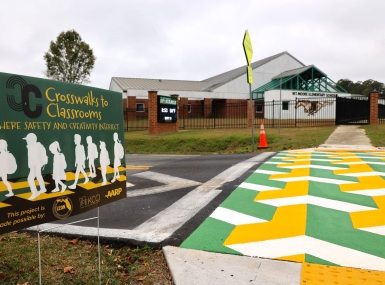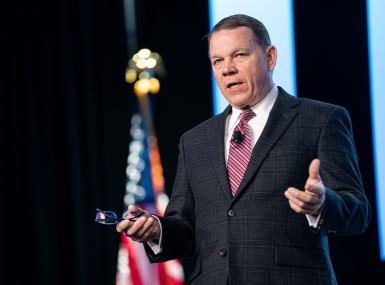Counties directly eligible for over $3 billion in competitive USDOT funding for community and regional planning
Upcoming Events
Related News

Key Takeaways
On July 5, the U.S. Department of Transportation (USDOT) announced the availability of over $3 billion in competitive funding through the Reconnecting Communities and Neighborhoods (RCN) Program. This notice of funding opportunity (NOFO) combines two programs, the Reconnecting Communities Pilot (RCP) Program and the Neighborhood Access and Equity (NAE) Program. Counties are directly eligible for this funding opportunity and the deadline to apply is September 28, 2023.
In response to NACo feedback on the common application process, USDOT has continued to offer grant programs through a single notice of funding, allowing counties to apply to both programs using one application. This practice dramatically decreases the time and cost it takes to prepare a competitive application and we applaud our intergovernmental partners at USDOT for continuing this commonsense practice.
The RCN program, which is funded through the Bipartisan Infrastructure Law (BIL) and the Inflation Reduction Act (IRA), is broken down into three types of grants – Capital Construction, Community Planning and the Regional Partnerships Challenge. Although both the RCP and NAE programs share the same application, they still exist as individual programs for the purpose of awards with different requirements, such as set-asides, minimum and maximum awards, and cost share requirements. The table below outlines the differences in programs.
|
Programs |
Reconnecting Communities |
Neighborhood Access |
||
|
Planning |
Construction |
Planning |
Construction |
|
|
Set-Asides |
None |
None |
40% for disadvantaged/ underserved communities |
40% for disadvantaged/ underserved communities |
|
Award Size Restrictions |
Award max $2 million |
Award minimum $5 million |
No Min/Max |
No Min/Max |
|
Total Federal Cost Share |
80% |
50% (up to 80%) |
80% (100% for disadvantaged/ underserved communities) |
80% (100% for disadvantaged/ underserved) |
Capital Construction Grants
In total, the RCN makes $1.14 billion available for capital construction. Of that total, RCP provides $148 million and the NAE provides $1 billion. Both programs focus on reconnecting and improving access to disadvantaged communities while also reducing environmental harm.
Eligible projects must seek to improve:
- The removal, retrofit, minimizing a facility that divides a community
- Addressing air pollution, noise, stormwater, or other burden from a facility
- Improving, building or expanding access to Complete Streets
Community Planning Grants
In total, the RCN makes $185 million available for community planning. Of that total, RCP provides $50 million and the NAE provides $135 million. Eligible planning projects must be aimed at planning and future support of construction projects.
Projects may include:
- Planning needs to reconnect communities
- Community and public engagement
- Evaluating the environmental impacts of transportation in marginalized communities, including air quality, greenhouse gas emissions, areas with high heat levels, inadequate tree coverage, and transportation and infrastructure susceptible to flooding
- Constructing local and community anti-displacement agreements
Regional Partnerships Challenge
Finally, $450 million is authorized solely through the NAE for Regional Partnerships Challenge Grants that are focused on creating intergovernmental partnerships with non-profit, private and other community partners. Partnerships should focus on addressing persistent regional mobility, accessing barriers and lowering greenhouse gas emissions. Eligible activities for this program are the same as those under Capital Construction Grants and Community Planning Grants.
To access these funds, counties must partner with at least one of the following:
- Fellow county/counties
- Any unit of local government
- State
- Metropolitan Planning Organization
- Special purpose district
- Political subdivision of a state
- Non-profit or institution of higher learning
- Tribal Government
Counties own and operate 45 percent of public roads and 38 percent of bridges, while also directly supporting over a third of the nation’s public airports and transit systems. As intergovernmental partners, counties value federal funding opportunities like the RCN that help counties connect, and reconnect, communities burdened by decades-old transportation decisions that divided communities and created disadvantaged populations.
Attachments
Related News

FY 25 Update: USDOT announces $982 million through Safe Streets and Roads for All Grant Program
On February 21, the U.S. Department of Transportation announced the availability of $1.2 billion through the Safe Streets and Roads for All competitive grant program in Fiscal Year 2024 for transportation safety planning or construction projects.

County promotes traffic safety with colorful crosswalks
Leon County, Fla., created elevated, colorful crosswalks to decrease speeding and increase pedestrian safety.

Rep. Sam Graves: ‘Compromise’ will get it done
The House Transportation and Infrastructure Committee chairman said the upcoming surface transportation reauthorization will focus on traditional infrastructure.